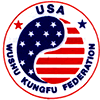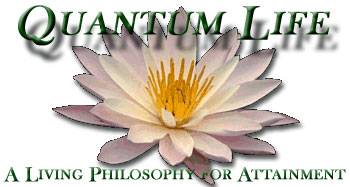Proud
Member
of USAWKF
of USAWKF
On Conflict
At the time of the first quarrel in the Sangha, the Buddha said:
"If you can find a trustworthy companion
With whom to walk, both virtuous and steadfast,
Then walk with him content and mindfully,
Overcoming any threat of danger.
If you can find no trustworthy companion
with whom to walk, both virtuous and steadfast,
Then, as a king who leaves a vanquished kingdom,
Walk like a tusker in the woods alone.
Better it is to walk alone:
There is no fellowship with fools.
Walk alone, harm none, and know no conflict;
Be like a tusker in the woods alone."
The Life of the Buddha by Bhikkhu Nanamoli, p.113
Conflict. Predictions from the 2500-year-old Lotus Sutra, the almost 800-year-old
teachings of Nichiren, and many other sources describe this time of Man
to be tumultuous, spiritually chaotic, and full of misshapen thoughts
and misunderstanding. Our own observations would see a rapidly developing
instability with tremendous movement and constant change as a central
theme. Desperation mixed with opportunity and competition driven almost
exclusively by greed for money, power, and instant gratification. Indeed,
this is a time of great unrest and chaotic emotionalism.
In this anxious environment, it is inevitable that tensions and therefore conflict manifest at every turn. It is rapidly becoming impossible to foresee an opportunity for conflict in order to avoid it. So the situation requires that we learn how to deal with conflict in our daily lives in the best possible way. In this endeavour, the great sages tell us that to avoid conflict is the noblest path. But what of conflict that is unavoidable or persistent. Again, the sages tell us to apply weakness to strength and strength to weakness. How does that work? When someone is upset, loud, truculent, and abusive, it is best to be supple, empathize with the pain and not the words, approach the matter after some time has past to allow reflection and a fresh viewpoint. Like a pliant tree in a strong wind that bends but does not break; conversely, a weak inadequate, or evasive situation demands stern and clear directives with specific admonitions and stated expectations.
In the day of the sages, conflict would arise only between individuals and rarely in other circumstance. Today, conflict may arise from your transportation, "traffic", Work rules, and policies, equipment failure, and so on. In many of these situations it may be that the great sages advice can still be of use as abstracted to fit the situation. Whether it is the failure of our cars to function or the train to be on time or a delivery to reach its destination, to react with force is inappropriate and will produce more damage rather than results. Perhaps even more difficult however, is the tendency to feel overwhelmed when "things" are not "working". It may be the repeated failure of a co-worker or the constant misinformation of a supplier or vendor. It may even come from within our midst, as doubt and compromise are constant issues in all aspects of economic and societal participations.
The above quote from "The Life of the Buddha", is most obviously interpreted to describe the difficulty in relationships with others. The Buddha would have us adopt a singular path of solace rather than to be dissuaded by the obstacles of another. Though this reading has much merit, it must also be said that the solo path is not the aim of this teaching. The primary implication of this passage is the inherent importance for all of us to find relationships to experience trust, virtue, and steadfastness. Should this goal simply not present itself or be impermanent, it is of critical importance that you are not stopped or dissuaded from progress.
So the important implication of this teaching is that ultimately, whatever obstacles present themselves in our lives, the conflict is truly within our selves. It is paramount that conflict be dealt with immediately and without emotion. For our response to conflict defines and determines our relationship with our universe, our selves.
This is one of the meanings of the characters of Ren and Ge of Namu Myo Ho Ren Ge Kyo, represents the white Lotus Flower as the culminating effort of our spiritual achievement, while, at the same time, the product of growth from a murky and muddy swamp. To remain clear in our highest state while navigating the obstacles and conflicts inherent in our environment and ourselves is the purpose of daily practice, study, and the life state we learn to develop.
With all my respect,
Reverend Sylvain Chamberland
March 8, 2006
BACKGROUND
At this time, the Reverend was experiencing isolation in geography and
in thought. The small town of Tupelo Mississippi in the United States,
with a population of about 80,ooo, was a political and religious hotbed
of corruption, private interests and arrogant ignorance. Outsiders were
smiled at and quickly shunned and uninvited. New philosophies were regarded
as an affront, or worse, as a threat. Wealth and poverty lived side by
side with each existing as fodder for the others politics.
Though the Reverend repeatedly and regularly challenged and reached out to the environment, the people of this area were unable or unprepared to hear the Reverend's teaching. The occasional exception was always a prize and cause for joy and celebration.












